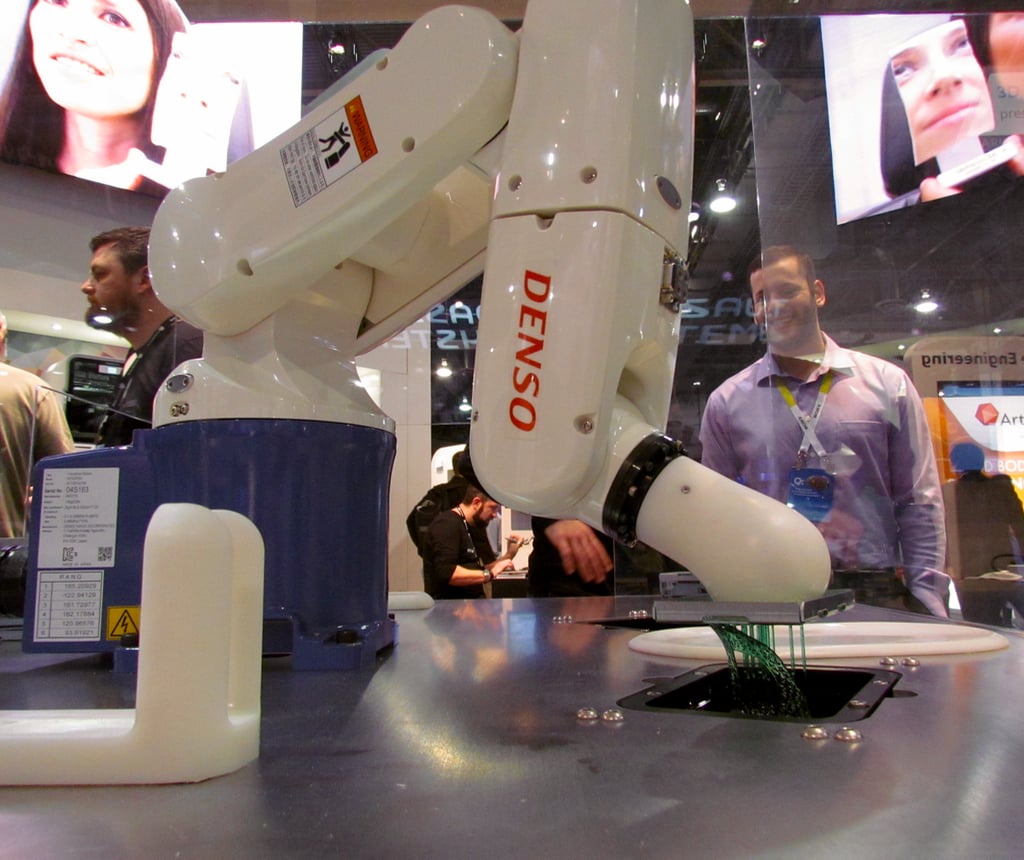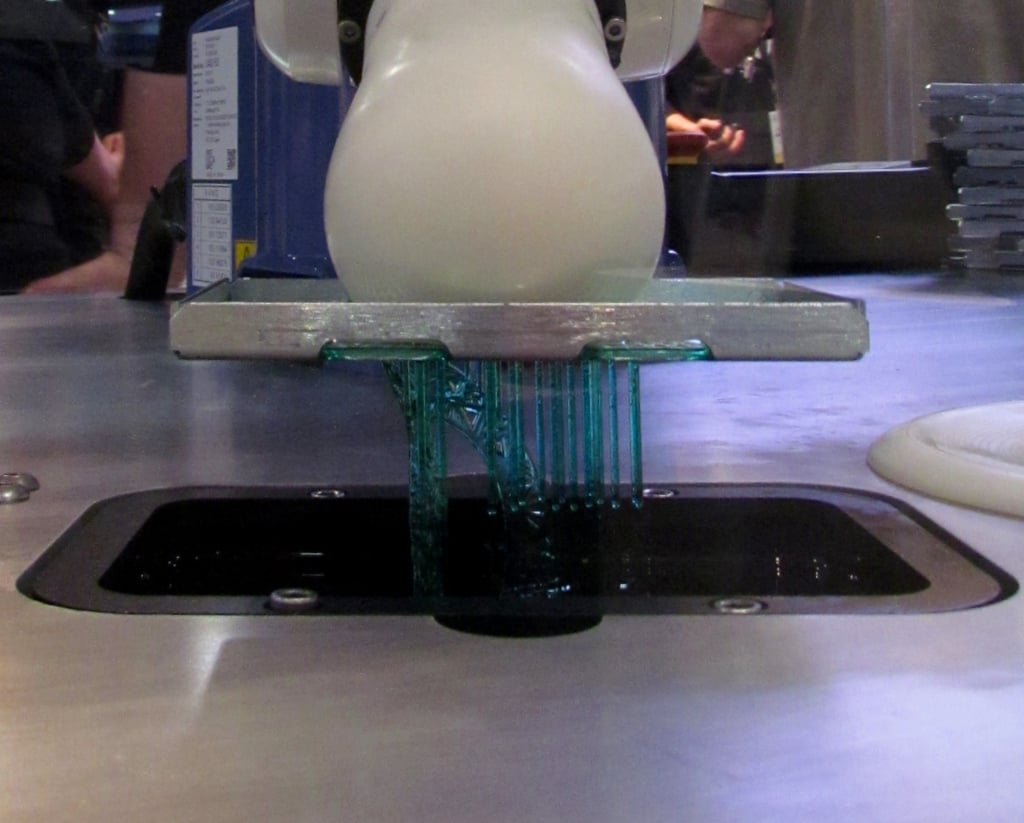
Hidden deep within the not-quite-football-field-sized 3D Systems booth at CES was something that might change manufacturing.
It wasn’t a product, just a prototype, apparently based on the original 3D printing patent from the company’s founder, Charles Hull. They call it “SLABOT-1”, and it looks like a robot arm. But that’s really not the point.
SLABOT-1 isn’t even a new 3D printing process; it’s simply their standard SLA process, with the build plate mounted on the end of a robot arm.
The build plate is attached magnetically, so that it can be detached under program control.

So what’s the magic here? It’s this:
After the print completes, the robot can hand off the print to the next step in a manufacturing process.
Why is this important? Because up until now, most 3D printers in factories were simply standalone machines that required operators to unload and finish prints. With the SLABOT approach, the robot simply drops the print into the next step, which might be painting, smoothing, trimming, or any other manufacturing step.
This INTEGRATES 3D printing directly into a factory assembly line!
But wait, you say 3D printing is slow. Yes, but who cares? With this approach, you can have MANY robot arms in play at once in a factory. You could, for example, have 30 x 30 minute prints going at once. Each minute, one print completes and is passed off to the rest of the assembly line. Parallel printing is what makes this work even better.
3D printing has long been viewed as a prototyping technology, in which it has performed admirably. But now, as the materials and speeds increase, it’s time to manufacture products, too. The SLABOT approach shows how 3D printing could integrate into production processes in an effective manner.
3D Systems will be providing a systems development kit from which factories will customize this integration, as all factories will have unique requirements.
The challenge for 3D Systems will be to educate manufacturers on the new process and provide the equipment at effective pricing.
We feel this is a pretty big step for 3D printing technology, which up to now was not directly part of manufacturing workflows.
Via 3D Systems

